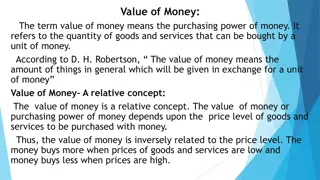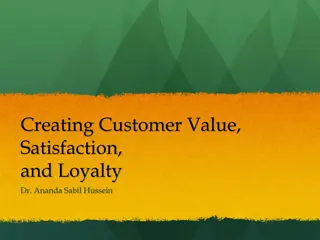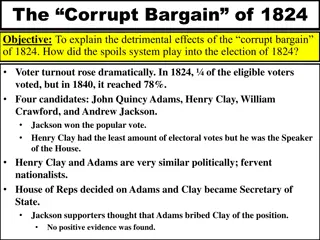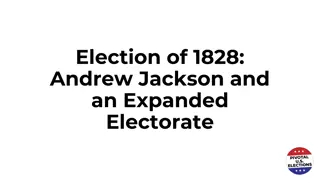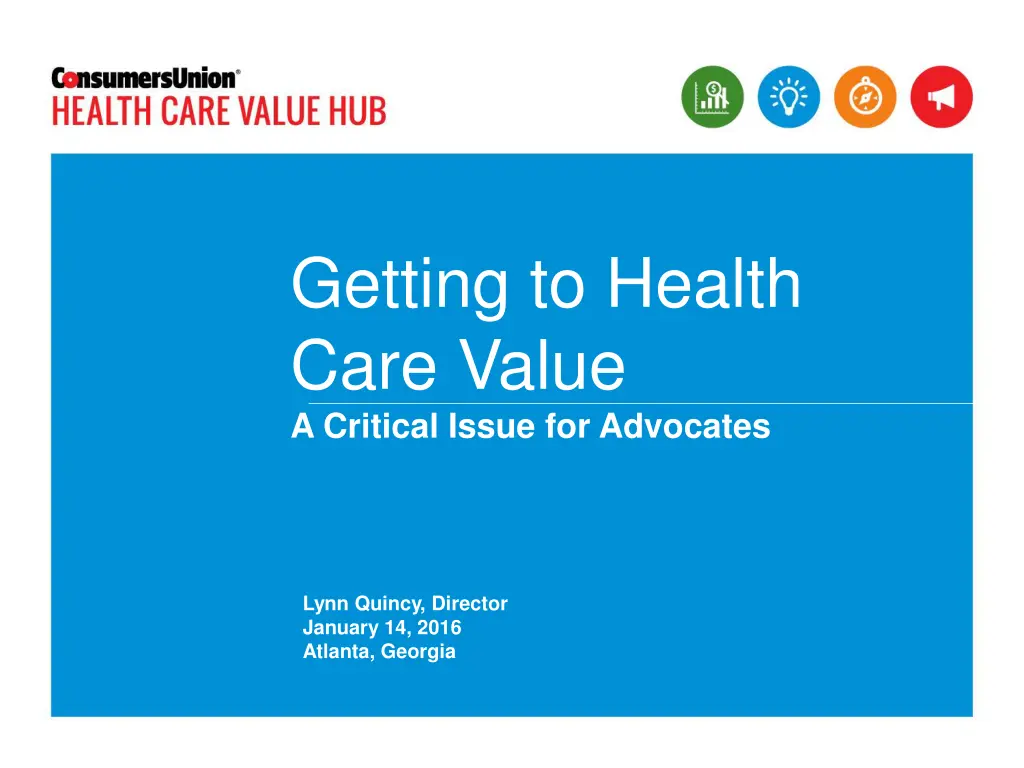
Understanding Health Care Value and Challenges for Advocates
Explore the critical issue of health care value, highlighting rising costs, poor transparency, and inadequate quality. Learn about the impact on consumers, the urgent need for a comprehensive framework, and strategies for achieving high value in health care delivery.
Download Presentation

Please find below an Image/Link to download the presentation.
The content on the website is provided AS IS for your information and personal use only. It may not be sold, licensed, or shared on other websites without obtaining consent from the author. If you encounter any issues during the download, it is possible that the publisher has removed the file from their server.
You are allowed to download the files provided on this website for personal or commercial use, subject to the condition that they are used lawfully. All files are the property of their respective owners.
The content on the website is provided AS IS for your information and personal use only. It may not be sold, licensed, or shared on other websites without obtaining consent from the author.
E N D
Presentation Transcript
Getting to Health Care Value A Critical Issue for Advocates Lynn Quincy, Director January 14, 2016 Atlanta, Georgia
Symptoms of Poor Health Care Value High and rising health care costs Health Spending/GDP: 1975 = 8% 2013 = 17% 2023 = 19% projected Too little transparency Unwarranted variation in health care prices Unacceptable variation in health care quality 2 Getting to Health Care Value @HealthValueHub
Poor health care value is a consumer hardship Difficulty affording premiums and out-of-pocket expenses >> sub-optimal health care Lower paychecks Medical harm Public resources diverted from other uses 3 Getting to Health Care Value @HealthValueHub
Whats missing is a sense of urgency and a comprehensive framework for describing the problem and making it a priority for legislators and regulators.
What Is Health Care Value? Achieving high value for patients must become the overarching goal of health care delivery, with value defined as the health outcomes achieved per dollar spent. This goal is what matters for patients and unites the interests of all actors in the system. -Michael E. Porter, Ph.D., What Is Value in Health Care? N Engl J Med December 23, 2010 5 Getting to Health Care Value @HealthValueHub
Poor Health Care Value IS An Urgent Problem We overspend on medical care by as much as $3,000 per person per year. Avoidable medical errors are now the third leading cause of death in the U.S., claiming the lives of 400,000 hospital patients each year. In Georgia, more than 20% of the population did not go to the doctor due to concerns about cost. Delayed care can lead to suffering and higher costs down the road. The effects of unaffordable medical bills go well beyond the medical system affecting ability to pay rent and other bills. 6 Getting to Health Care Value @HealthValueHub
Health care costs are a top of mind worry for consumers Health coverage is one of most expensive purchases consumers make. Consumers feel strongly that someone probably a government entity - should address high health care prices. Consumers willing to embrace a wide-range of solutions. But they believe clinical health care quality is high and uniform 7 Report available at: http://consumersunion.org/consumer-views-on-health-costs-quality-and-reforms/
Addressing poor health care value IS a role for regulators and legislators, and therefore advocates Mostly, health care markets don t work and can t be made to fix the problem: information asymmetry, market power, third party payers Number of Insurers with Greater than 5% Market Share Herfindahl- Hirschman Index (HHI) Market Share of Largest Insurer Georgia Individual Market Bordering on concentrated 36% 3 Moderately competitive Small Group 28% 4 Excessively concentrated Larger Group 42% 5 Source: Kaiser Family Foundation State Health Facts Data from 2013 8 Getting to Health Care Value @HealthValueHub
Getting Started Support/Use All Payer Claims Dataset (APCD) in your state: Inform Rate Review (being pursued/considered in OR, NH, VT, MD, MI) Support price transparency tools for consumers and other audiences Understand the pricing landscape and identify outliers/ areas of excessive price variation Expand factors used in Rate Review Affordability (RI) Reasonability of provider contracts Support legislative efforts to address Surprise Medical Bills Work across state agencies to comprehensively address health care spending and quality in your state 9 See, for example, Applicability of All-Payer Claims Databases for Rate Review and Other Regulatory Functions, Wakely Consulting Group, 2014. Also HealthCareValueHub.org
Operate from an informed basis: Cost drivers Quality measurement Interventions that work This is all tricky stuff!
Aging of the population is NOT an important cost driver Average Annual Change in Per Capita Health Spending 12% 10% 8% 6% Due to Aging 4% Total Change 2% 0% 1930-1950 1950-1970 1970-1990 1990-2010 11 See: Dale H. Yamamoto, Health Care Costs from Birth to Death, June 2013
Rising unit prices drive our health care spending growth; increases in utilization are a less important factor Outpatient Care: Average Annual Percentage Change Inpatient Care: Average Annual Percentage Change 8 8 6 6 4 4 2 2 Utilization 0 0 Price -2 -2 -4 -4 -6 -6 2012 2013 2014 2012 2013 2014 12 Source: 2014 Health Care Cost and Utilization Report Appendix, HCCI, Oct 2015
Provider market power is a major reason for unit price growth Massachusetts AG scrutinized the normally secret provider contracts and found: wide disparities in prices are not explained by differences in quality, complexity of services, or other characteristics that might justify variations in prices paid to providers. Instead, prices reflect the relative market leverage of health insurers and health providers. 13 Source: Office of Attorney General Martha Coakley, Examination of Health Care Cost Trends and Cost Drivers, June 22, 2011.
Only about 7% of overall health spending is shoppable and paid out-of-pocket by consumers And this is an outer bound. Adding a requirement that usable price and quality data be available would narrow the range of shoppable services substantially. Shoppable Services = 33% ~7% Consumer OOP= 13% Source: Health Affairs Blog forthcoming; White and Eguchi, Reference Pricing: A Small Piece of the Health Care Price and Quality Puzzle, NIHCR Research Brief No. 18 (October 2014) and CMS. 14
Most Health Care Dollars Are Directed by Physicians Consumers out-of-pocket spending is just 13% of our nation s health care bill. And a portion of this is still directed by the doctor. The most expensive piece of medical equipment is a doctor s pen. Source: CMS, National Health Expenditures Getting to Health Care Value @HealthValueHub 15
What IS the Health Care Value Hub? We monitor, synthesize, translate and disseminate evidence about interventions intended to improve value for our health care dollar. We support and connect consumer advocates across the U.S., providing comprehensive fact- based information to help them advocate for change, and connect them to researchers and other resources. 16 Getting to Health Care Value @HealthValueHub
Hub Resources Easy Explainers short 2 pagers Research Briefs longer reports that navigate the research and discuss consumer considerations Recommendations for experts Free monthly webinars on timely topics featuring key subject-matter experts and the advocacy perspective Sign up to receive the monthly Research Roundup e-newsletter. 18 Getting to Health Care Value @HealthValueHub
Thank you! Contact Lynn Quincy at lquincy@consumer.org or any member of the Hub team with your follow-up questions. Visit us at www.HealthCareValueHub.org



